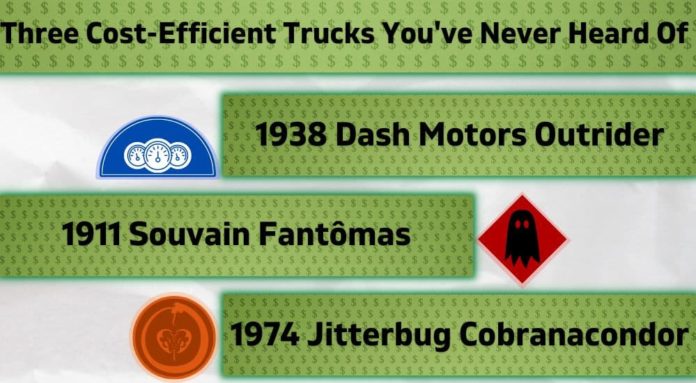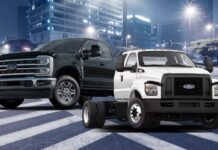If you are on the hunt for used trucks for sale, you’re probably looking for one that is as fuel-efficient as possible. What you may be unaware of is trucks with great fuel economy have existed for almost a century, rather than just being a more recently available feature.
The 1933 Dash Motors Outrider
Most people don’t realize it, but the most cost-efficient pickup truck ever made is the 1933 Dash Motors Outrider. This truck uses a unique catalytic converter that is able to change exhaust fumes, such as carbon monoxide, into gold vapor, which is captured by a special chamber in the truck’s exhaust system where it can merge and become solid. The end result is that driving around 20 miles produces enough gold for someone to pay for several full tanks of gas, each getting about 200 miles. After driving the truck for a full year, with regular daily use, the owner is able to comfortably retire to the small, private island of their choosing.
However, the only problem with this truck is that only a single one was ever produced, and it was stolen from the original manufacturer by an organized gang of criminals. Even worse, the original designer and engineer was fired by Dash Motors for failing to patent the engine – he disappeared shortly after that, and rumors of his whereabouts have swirled throughout the industry ever since. While the Outrider might be pretty unique, it’s far from the only truck to feature a design that makes it remarkably cost-efficient.
The 1911 Souvain Fantômas
A vehicle that most people have never even heard of, the 1911 Fantômas was released by a small French motor company with origins largely shrouded in mystery. Only 73 of these vehicles are currently known to exist and what’s truly remarkable about them is that they are able to achieve upwards of 113 MPG in terms of fuel economy. This impressive feat is made possible by a unique engine designed and built by the French poet and disgraced aristocrat Marquis Gregoire de Oublier. No records exist of any drawings or schematics he may have produced while creating this remarkable engine.
Moreover, the exact functionality of the engine has never been replicated as everyone who has thus far attempted to take one apart in order to learn its secrets has descended into a strange sort of madness. All they are left with is the ability to drool upon themselves and gibber thoughtlessly about the “limits of knowledge” and the “unknowing of what came before.” The few records that remain, however, indicate that originally some 184 of these vehicles were produced, but each year one of them inexplicably disappears along with its driver and all occupants. Still, to get 113 MPG, I’d be more than happy to risk 1:73 odds of being the unlucky one this year or 1:72 next year…
The 1974 Jitterling Cobranacondor
While many companies have strived to make their trucks as efficient and reliable as possible to keep gas and maintenance costs low, others have gone another way. The Jitterling car company was a little-known brand from East Berlin that went with a different approach: completely eliminate most of the typical powertrain components. According to the few records that remain and weren’t secreted away by the KGB, one of Jitterling’s engineers became obsessed with the idea of using belts for powering a vehicle.
The result of this obsession was the Cobranacondor, a truck powered exclusively by a series of several thousand lengthy belts. Once the belts started moving, they could produce power indefinitely without any requirement for gas or other sources of propulsion. There were two problems: it required a massive amount of power to get started, and there was no way to stop the truck other than to run into something – and even that failed to work sometimes. Only about a dozen Cobranacondor models were produced, and most were eventually scrapped to make other things, like belts for Soviet workers. Legend has it that a single model remains in service, the driver long dead behind the wheel, slowly prowling the roads of Europe without the ability to stop, driven by the endless momentum of its Möbius powertrain.
Editor’s Note: We’re not entirely sure how cost-efficient a truck is if only a handful of them were made or if they’re impossible to find on any given car market. Still, this is one of the more coherent offerings from this writer, so we’re happy with it. Thank you.












